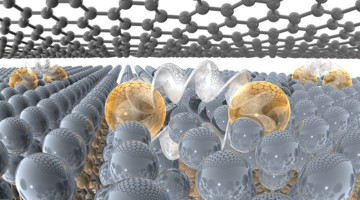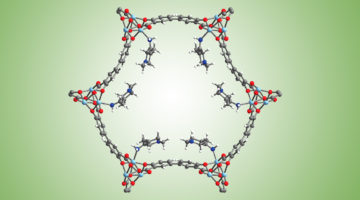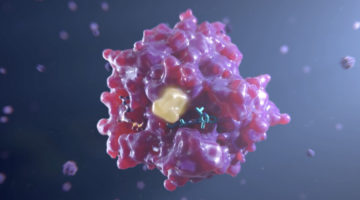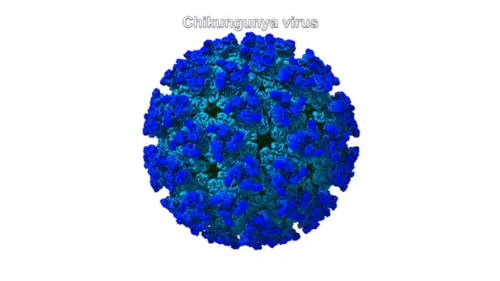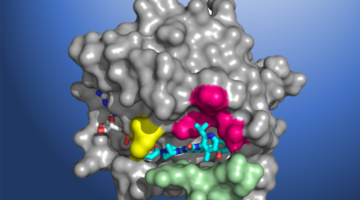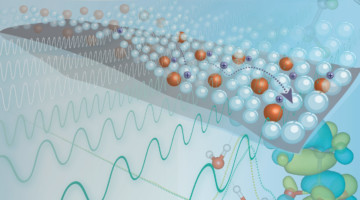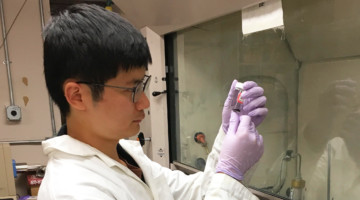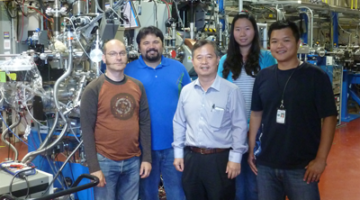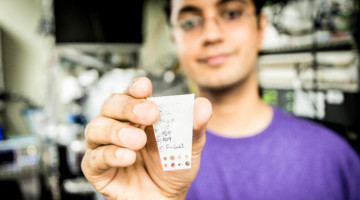Using a new method for stabilizing a two-dimensional (2D) metal on a large-area platform, researchers probed the origins of the material’s superconductivity. The work represents a notable milestone in advancing 2D materials toward broad applications in topological computing, advanced optics, and molecular sensing. Read more »![]()
![]()
Industry@ALS
A Graphene Innovation That Is Music to Your Ears
A California-based company called GraphAudio is moving toward commercializing graphene-based audio technology developed by researchers at Berkeley Lab and UC Berkeley. The technology could transform a variety of devices, including speakers, earbuds and headphones, microphones, autonomous vehicle sensors, and ultrasonic and echolocation systems. Read more »
Water Improves Material’s Ability to Capture CO2
With the help of the ALS, researchers from UC Berkeley and ExxonMobil fine-tuned a material to capture CO2 in the presence of water. The parties have applied for a patent on the material, which was developed for use on the relatively humid flue gases emitted by certain natural gas power plants, a cleaner-burning alternative to coal. Read more »![]()
![]()
ALS Reveals Vulnerability in Cancer-Causing Protein
A promising anticancer drug, AMG 510, was developed by Amgen Inc. with the help of novel structural insights gained from protein structures solved at the ALS. AMG 510, which is currently in phase II clinical trials for efficacy, targets tumors caused by mutations in the KRAS protein, one of the most common causes of cancer. Read more »![]()
![]()
Molecular Handle Enables Viral Attack on Joint Cells
A collaboration of university and industry researchers used x-ray crystallography to investigate how the chikungunya virus, which can cause debilitating joint pain, engages a receptor protein found on the surfaces of joint cells. The work provides a path forward in the fight against a family of viruses that can result in acute and chronic arthritis. Read more »![]()
![]()
Unique Cancer Drug Discovered With Help From Advanced Light Source Begins Historic Clinical Trial
Errors in the KRAS gene, which encodes a crucial cell-signaling protein, are one of the most common causes of cancer. Seeking to develop a long-sought direct inhibitor, researchers at Amgen conducted x-ray crystallography of KRAS(G12C) proteins at the ALS. The high-resolution structural maps helped Amgen make the breakthrough discovery of a small pocket on the molecule. Read more »
Multimodal Study of Ion-Conducting Membranes
Using multiple x-ray characterization tools, researchers showed how chemical and structural changes improve the performance of a novel ion-conducting polymer (ionomer) membrane from 3M Company. The work provides insight into factors impacting the proton conductivity of ionomers used for fuel cells and the production of hydrogen fuel. Read more »![]()
![]()
ALS Confirms Mechanism for Improved Fuel Cell Catalysis
Aided by x-ray absorption spectroscopy at the ALS, researchers from Toyota and the University of Akron have uncovered a new catalysis mechanism to improve oxidation-reduction reactions in certain fuel cells by 40%. This enhancement, based on tin oxide, will support efforts to increase fuel efficiency in electric vehicles. Read more »![]()
Team Chemistry Powers Industry Collaborations at the ALS
At the ALS, industry users find scientific experts and specialized facilities. Their collaboration drives discovery in a variety of fields, yielding results that are greater than the sum of their parts. Read more »
Memristor Collaboration between ALS and Hewlett Packard Labs Propels Theory to Application
The development of an idea into a commercial product can take decades, a timeframe that allows contributions from multiple generations of scientists and requires investment in basic research. Collaborative research between the ALS and Hewlett Packard Labs has advanced the memristor, a device that can store information using little to no power. Read more »
- « Previous Page
- 1
- 2
- 3
- 4
- 5
- …
- 7
- Next Page »
